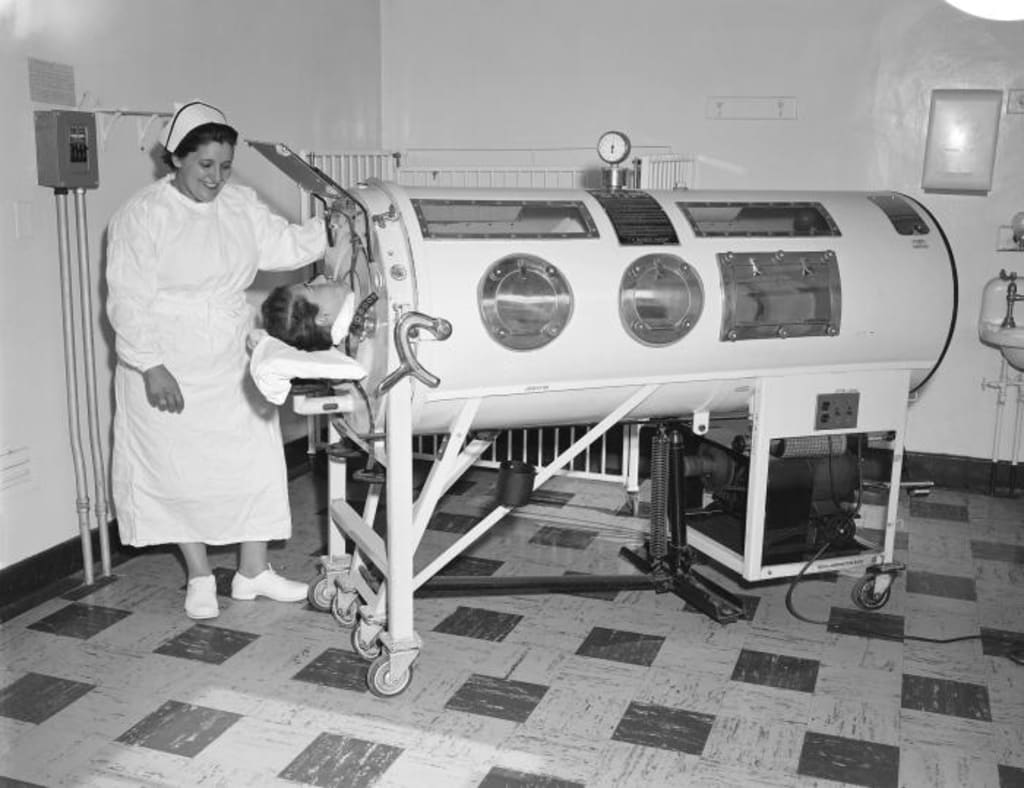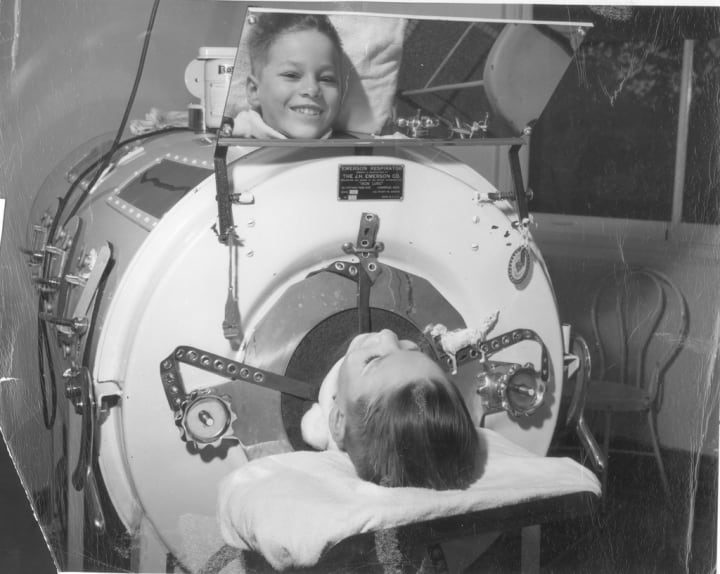Iron Lungs and Polio: Two People Remain in the U.S. That Rely on Iron Lungs to Breathe
In the 1950s, thousands of people suffering from polio relied on tank respirators for their survival

Twelve thousand people in the U.S. with paralytic polio used iron lungs to help them breathe in 1959. By 2004 it was 39. Today just two people in the U.S. remain reliant on the large breathing machines.
In 2019, there were three people using iron lungs. Today it’s two.
Martha Lillard and Paul Alexander are the last known Americans still using the giant metal tanks to help them breathe. According to the Guardian, the last person in the United Kingdom that used an iron lung died in 2017.
Mona Randolph
There was a third person that, until recently, also depended on an iron lung for survival. Mona Randolph contracted polio when she was 20 and lived using the iron lung until 2019 when she died from long-term complications of the disease. Mona was an advocate for independent living for people with severe disabilities and was able to live alone in her home with the help of caregivers.
Martha Lillard
Martha was five years old when she woke up with a sore throat and a pain in her neck. She was diagnosed with polio, hospitalized for six months, and put inside an iron lung to help her breathe.
Martha still sleeps in her iron lung every night. And though her life has been limited due to her disability, she enjoys painting, taking care of her dogs, watching movies, and spending time with her childhood friend, who has taught her to “appreciate small things.”
Paul Alexander
Paul contracted polio when he was six years old. Doctors told his parents they didn’t expect him to survive. Though he could never leave the iron lung behind him, he did more than merely survive with it, he lived a full life inside the iron lung for the next seven decades.
Paul attended law school and became a successful attorney, teaching himself to be able to breathe on his own for limited amounts of time and was able to argue cases in court from his wheelchair. He even lived in the dorms inside of his iron lung.
Like Martha, when Paul was younger, he spent most of his days outside the iron lung while sleeping in it at night. However, now in his 70s, he spends most of his time lying in the machine.
If you’d like to learn more about Paul’s story you can read the book he wrote about his life, “Three Minutes for a Dog: My Life in an Iron Lung.” Paul’s unshakeable love of life shines through in his book. Here is an excerpt,
“Living is so amazing to me. No matter how great an artist, I would never be able to mix the hues and place them on a canvas so eloquently that they could ever come close to expressing the true portrait of my life.”
The history of the iron lung

Iron lungs were invented in the late 1920s to help people paralyzed from polio infections to breathe with assistance. Not everyone with polio gets the type that causes paralysis. But severe cases do cause paralysis, including of the breathing muscles.
Doctors found if a person could survive through the early part of the infection when breathing was difficult, they could often make full recoveries.
The machine is about seven feet long and large enough for a person to fit almost completely inside. People lie in the machine with just their heads outside. The machine seals around the neck, and bellows work as a human diaphragm, causing the person to inhale and exhale.
Mass distribution of iron lungs began in 1939, and each cost about $1,500, equivalent to nearly $32K today.
Problems with using the iron lungs today
Since the iron breathing machines are no longer manufactured, Paul and Martha both report having trouble finding working parts to replace parts when they break down, and health insurance no longer covers repairs.
Martha had to search for a used iron lung in the 1990s when her original machine began to break down. She was once stuck in the machine when the power went out and her emergency generator didn’t kick on. Paul has struggled to find technicians to work on repairs for his iron lung.
Polio makes a comeback
One of the scariest things during polio epidemics of the 1940s and 1950s was not knowing who would make a full recovery and who might end up with lifelong disabilities, or not be able to survive. Parents were so afraid of polio that many avoided large crowds and were careful who they let their children play with.
At the peak of the polio epidemic, thousands of people were lying inside iron lungs, unable to move and letting the machines do the breathing for them. Before the vaccine was made available, 16,000 cases of polio occurred each year in the U.S. It was a leading cause of disability in children.
The vaccine saved lives
The polio vaccine is a routine shot in the series of vaccines that infants receive. It is such an effective vaccine that it nearly eradicated the disease until low vaccination rates in New York caused cases to rise and the governor to declare a state of emergency. Health officials are urging unvaccinated individuals to get their vaccinations immediately.
Somehow people have forgotten the horror of polio in the past and have become lax about vaccinating their children against the disease. Health officials are hoping to boost vaccination rates in New York to 90% or above. Today, the overall state rate sits at 79%.
Paul told the Guardian back in 2020 about his fears that polio might return one day, “I can see hospitals inundated by polio victims again, an epidemic, I can see it so easily. I tell the doctors, it’s going to happen. They don’t believe me.”
*****
This story was originally published on Medium.
About the Creator
Jennifer Geer
Writing my life away. Runner/mama/wife/eternal optimist/coffee enthusiast. Masters degree in Psychology.






Comments
There are no comments for this story
Be the first to respond and start the conversation.